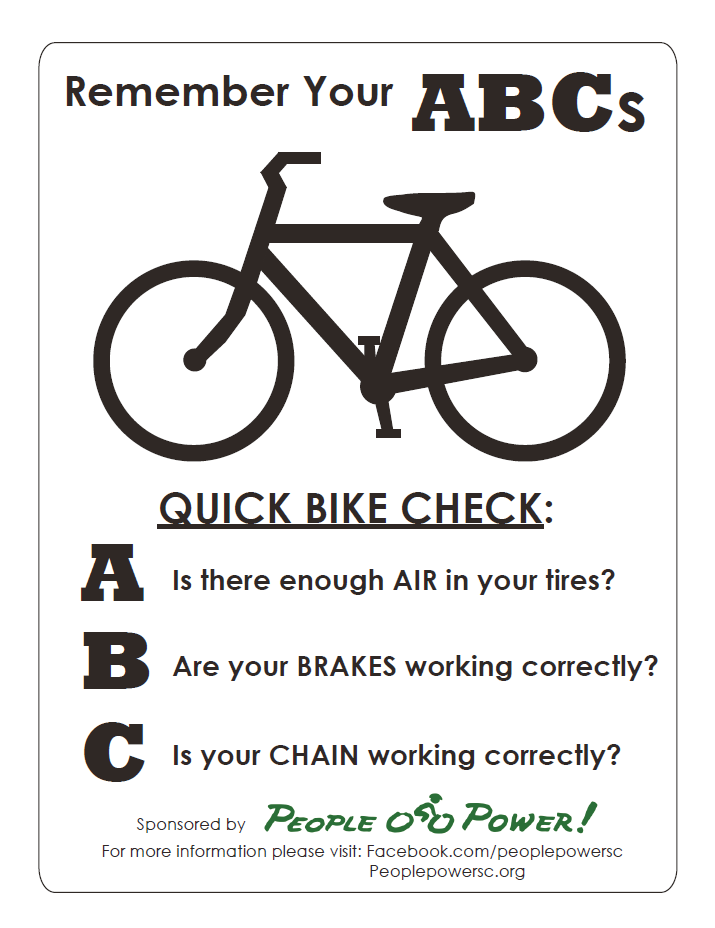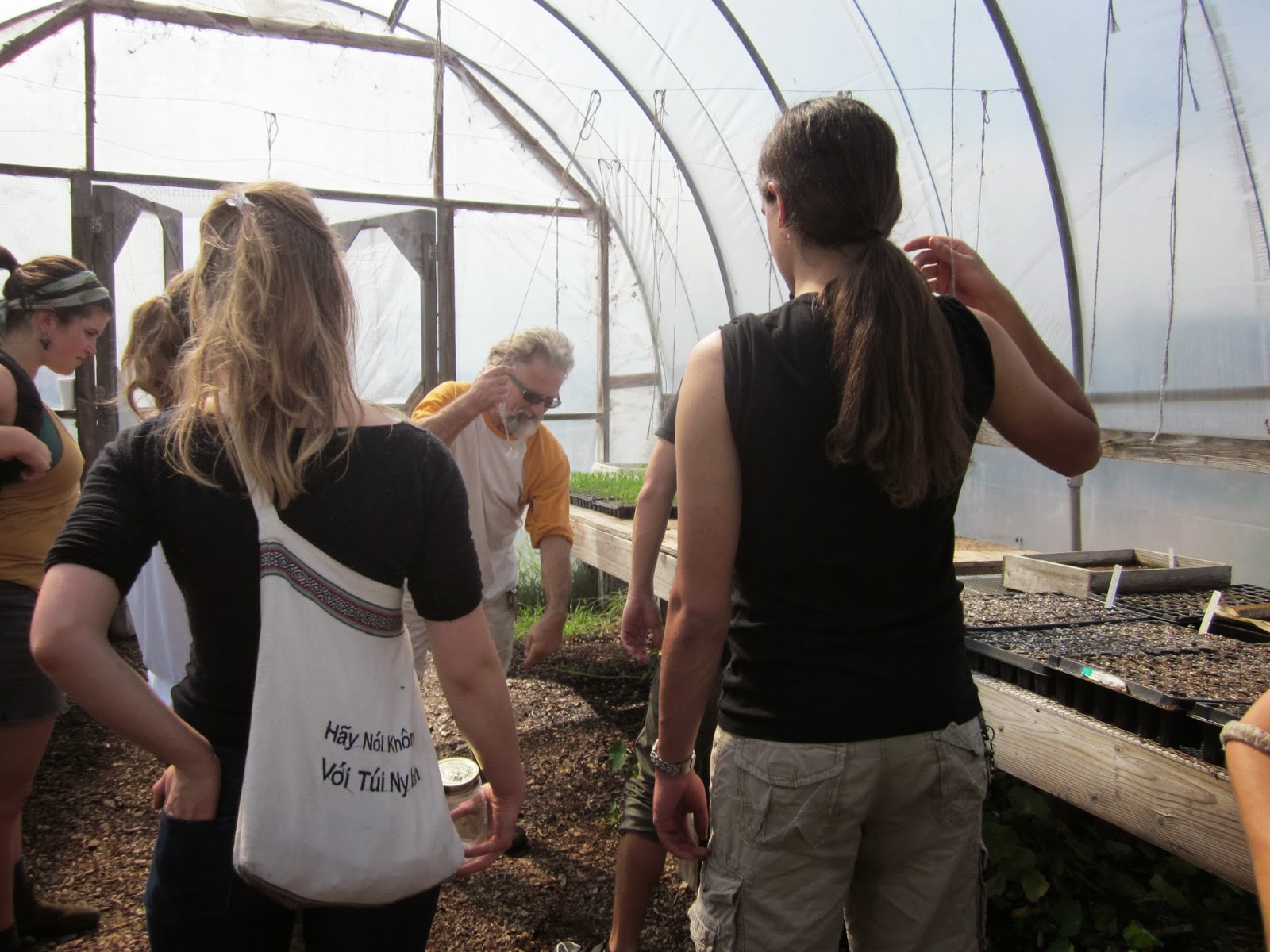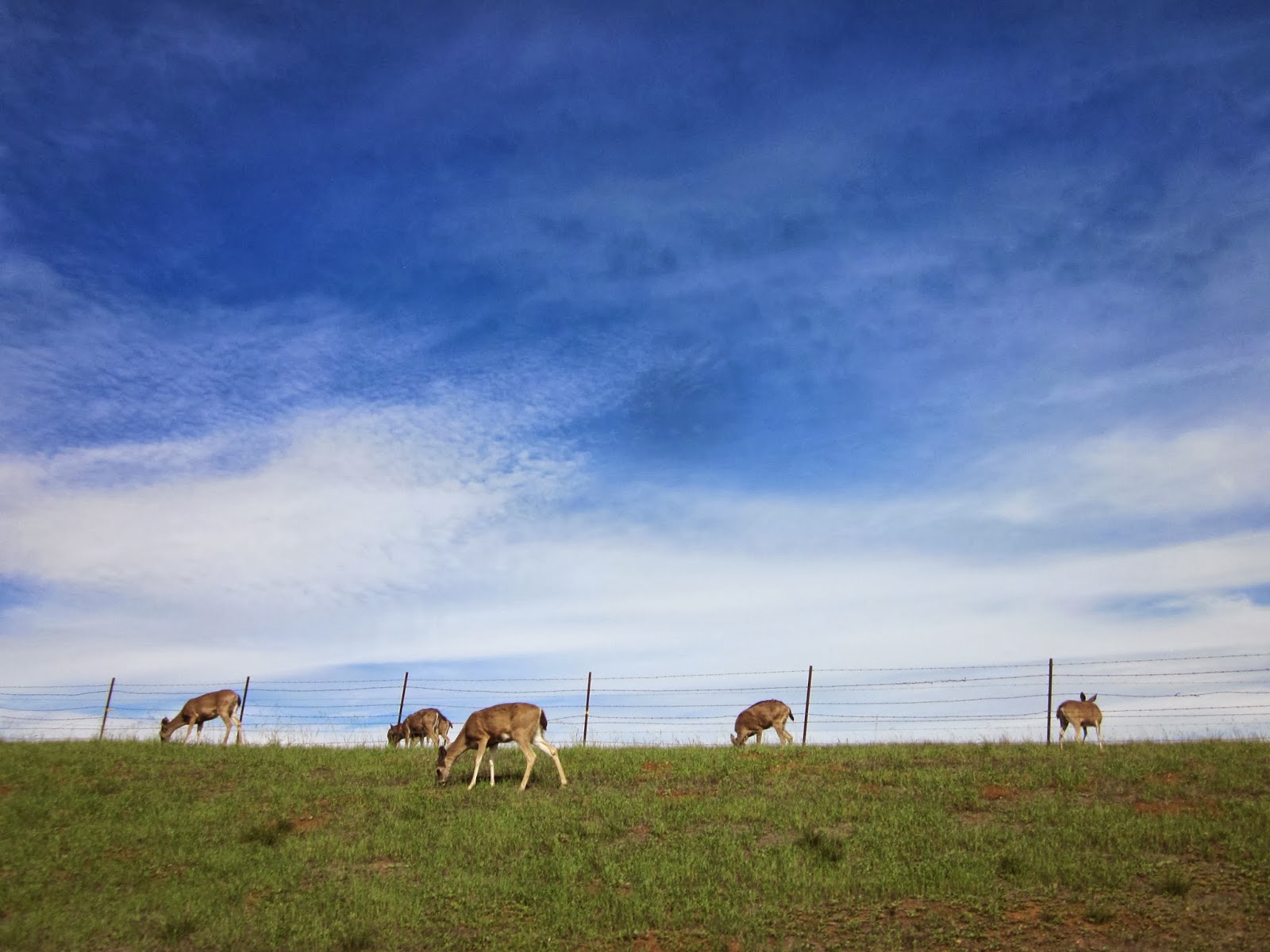This post is the second part of a series about my weekend. Yesterday I went on a hike with other women to learn about and engage with nature connection. You can read about it in part one of this series here.
Today, day two of this beautiful, sunny weekend, I woke up early and fortunately on time because my cell phone automatically switched for the time change. The things our technology can do these days! After a quick breakfast in the dining hall, I flew down the hill on my bike toward town. I say flew because today I was going to be a "SOUP'er Hero!"
I was invited to an event a few weeks ago titled "SOUP'er Heroes Bike Ride & Food Distro," and after reading the description, I was souper stoked to partake in such a great cause by bike. The description read, "Join us for a day of community service, food and cycling! Together we will ride to local farms and secret gardens, harvest veggies, make soup, and distribute it to feed the hungry masses. The ride is a collaboration between the Resource Center for Nonviolence, Food Not Bombs, and Green Ways to School. There will be food enough for all as we learn about the interconnected issues of homelessness, hunger, nonviolence, and the people-powered revolution."
As I've hinted to on this blog but never formally written about, I am co-teaching a class on sustainable transportation. We've covered topics like social justice, feminism, women's empowerment, walking, biking, busing, and climate change. The intersections (pun intended) between transportation and basically everything else in our lives is profound. We transport ourselves place to place daily, and everything we come into contact with has been transported to us in some way.
When people live in places that are far from healthy, fresh foods, they have a harder time acquiring those foods if they do not have the means to do so. Places like this are called food deserts, which the US Department of Agriculture defines as "urban neighborhoods and rural towns without ready access to fresh, healthy, and affordable food. Instead of supermarkets and grocery stores, these communities may have no food access or are served only by fast food restaurants and convenience stores that offer few healthy, affordable food options. The lack of access contributes to a poor diet and can lead to higher levels of obesity and other diet-related diseases, such as diabetes and heart disease." (I quote the USDA only because they have a succinct yet complete definition. The USDA subsidizes crops like corn and other agricultural products that then lead to the cheap dollar menu meals and other unhealthy food that folks in food deserts end up eating because nothing else is available.) With better transportation infrastructure (more efficient buses, better bike lanes, better walking paths), people in these places can more easily access food that might be farther away. Transportation isn't the only solution to these issues, but it is one approach.
So with all of these issues in mind, I joined about ten other people with bikes this morning on an adventure through town, along West Cliff Drive, and over to the Homeless Garden Project at Natural Bridges Farm.
Before we left, Tawn Kennedy went over the ABCs Quick Check with us to make sure our bikes were in tip-top shape. Tawn is one of the ride organizers and director of Green Ways to School, a program of People Power of Santa Cruz County that works to get more youth on bikes.
A - Air. Each type of bike has different types of tires, with different amounts of air that they should be filled with for optimal ride performance. Tawn showed us to look along the rim for the amount and then pump accordingly. Having the right amount of air in a bike tire is just like with a car--you get better mileage. Instead of miles per gallon of gas, though, we're working with miles per burrito or miles per bagel, depending upon everyone's breakfast of choice.
B - Brakes. We checked to make sure our brakes were at the right setting so they don't grab too quickly or too slowly.
C - Then we checked our chains, and Tawn reminded us the importance of greasing our chains and washing them. C also stands for cassette, another part of the bike to make sure is clean and doing well.
Quick - Quick is short for quick release, the little knobs on the tires that you can twist to quickly release the tire from your frame on many bikes. We made sure they were tight and clamped shut.
Then we were off!

Today, day two of this beautiful, sunny weekend, I woke up early and fortunately on time because my cell phone automatically switched for the time change. The things our technology can do these days! After a quick breakfast in the dining hall, I flew down the hill on my bike toward town. I say flew because today I was going to be a "SOUP'er Hero!"
I was invited to an event a few weeks ago titled "SOUP'er Heroes Bike Ride & Food Distro," and after reading the description, I was souper stoked to partake in such a great cause by bike. The description read, "Join us for a day of community service, food and cycling! Together we will ride to local farms and secret gardens, harvest veggies, make soup, and distribute it to feed the hungry masses. The ride is a collaboration between the Resource Center for Nonviolence, Food Not Bombs, and Green Ways to School. There will be food enough for all as we learn about the interconnected issues of homelessness, hunger, nonviolence, and the people-powered revolution."
As I've hinted to on this blog but never formally written about, I am co-teaching a class on sustainable transportation. We've covered topics like social justice, feminism, women's empowerment, walking, biking, busing, and climate change. The intersections (pun intended) between transportation and basically everything else in our lives is profound. We transport ourselves place to place daily, and everything we come into contact with has been transported to us in some way.
When people live in places that are far from healthy, fresh foods, they have a harder time acquiring those foods if they do not have the means to do so. Places like this are called food deserts, which the US Department of Agriculture defines as "urban neighborhoods and rural towns without ready access to fresh, healthy, and affordable food. Instead of supermarkets and grocery stores, these communities may have no food access or are served only by fast food restaurants and convenience stores that offer few healthy, affordable food options. The lack of access contributes to a poor diet and can lead to higher levels of obesity and other diet-related diseases, such as diabetes and heart disease." (I quote the USDA only because they have a succinct yet complete definition. The USDA subsidizes crops like corn and other agricultural products that then lead to the cheap dollar menu meals and other unhealthy food that folks in food deserts end up eating because nothing else is available.) With better transportation infrastructure (more efficient buses, better bike lanes, better walking paths), people in these places can more easily access food that might be farther away. Transportation isn't the only solution to these issues, but it is one approach.
So with all of these issues in mind, I joined about ten other people with bikes this morning on an adventure through town, along West Cliff Drive, and over to the Homeless Garden Project at Natural Bridges Farm.
Before we left, Tawn Kennedy went over the ABCs Quick Check with us to make sure our bikes were in tip-top shape. Tawn is one of the ride organizers and director of Green Ways to School, a program of People Power of Santa Cruz County that works to get more youth on bikes.
A - Air. Each type of bike has different types of tires, with different amounts of air that they should be filled with for optimal ride performance. Tawn showed us to look along the rim for the amount and then pump accordingly. Having the right amount of air in a bike tire is just like with a car--you get better mileage. Instead of miles per gallon of gas, though, we're working with miles per burrito or miles per bagel, depending upon everyone's breakfast of choice.
B - Brakes. We checked to make sure our brakes were at the right setting so they don't grab too quickly or too slowly.
C - Then we checked our chains, and Tawn reminded us the importance of greasing our chains and washing them. C also stands for cassette, another part of the bike to make sure is clean and doing well.
Quick - Quick is short for quick release, the little knobs on the tires that you can twist to quickly release the tire from your frame on many bikes. We made sure they were tight and clamped shut.
Then we were off!
There were quite a few UCSC students on the ride, which was fun! There was also one high school student, and a number of community members. In the picture above from when we were still downtown, pictured far left is Kevin Green, the Student Environmental Center's (SEC) Green Building Campaign Coordinator. Far right is Sarah Angulo, SEC's Drop Your Own Drip Water Campaign Coordinator.
We took the Pacific Avenue Zig-zag route, since parts of Pacific are one-way. This entails turning down side streets and then cutting between buildings along the alleyways. Thanks for showing us this super awesome route, Tawn!
On the ride, I spoke with a fellow UCSC student named Adrian who works at the Bike Co-operative on campus. He is writing his senior thesis on food justice and sustainable transportation, particularly bicycles. How cool is that!? We spoke about this along the ride, and we talked about collaborating on an event next quarter to bridge Earth Week and Bike Month with food justice, social equity, and accessibility. This is why I love going to community events with bikes--the conversations along the way are always productive and worthwhile!
After the ride along West Cliff Drive, past Natural Bridges State Beach, and up Delaware, we made it to the Homeless Garden Project, all a little more familiar with one another. It had been my intention to visit this garden that employs homeless people in the community since making a commitment to do so at a workshop I attended earlier this year called Generation Waking Up. I have heard really awesome things about the Project, did some Christmas shopping at their holiday store downtown (which is now open every weekend), and the founder of the project, Dr. Paul Lee, actually spoke in my sustainable transportation class earlier this quarter. The story from that day can be found here.
At the HGP, they have a circular bicycle-part bike rack, where we all locked up our bikes.
The Homeless Garden Project was founded in 1990. It is currently located at the Natural Bridges Farm, though in the future it may relocate to Pogonip, which was the original vision. It employs homeless people in the community and pays them to work on the farm. Anyone from the community can volunteer there, as well. You can learn about the history and current programs of the HGP here.
We had a tour with Don, who's been working at the HGP for four years. He told us a lot about the project, and said it is certified through California Certified Organic Farmers (CCOF), so they don't use any pesticides or chemicals. They grow all kinds of things--chard, kale, strawberries, flowers, herbs, artichokes, tomatoes, and much more.
This is a "victory garden" that is managed by a different person each year. It's a place to experiment with different plants and learn what grows well in the climate. Don said that their location along the coast means that the temperature is pretty consistent year-round. They are able to grow a lot of things year-round because of this.
He showed us the drying shed, where they dry flowers and lavender and tea. Nearby, there was a bee box, and Don shared with us that the bees can work year-round here because of the climate. Their honey could be called "multi-botanical potpourri honey" because so many plants in the area are visited by the bees and contribute to the honey.
Some participants wore capes because they are "soup'er heroes"! The cape on the left says "Babes on Bikes" because some students at Santa Cruz High School have created a group by that name. Green Ways to School provided these capes to wear today, so someone from SCHS must have made that pattern for the cape.
We explored a greenhouse with lots of little sprouts growing in containers.
There are 6000 strawberries at the farm!
This is "compost city," where they have a bunch of stacks of compost. He said their compost contains horse manure, straw, vegetation, and other plant materials. It can reach as a high as 160 degrees the first day you make a pile. Don said the ideal range is 130-150 degrees, and they keep a log each day to make sure it is staying within this range. This allows them to know it's okay to use with growing produce that will be sold to eat. Later in the afternoon, after the tour, I helped turn a compost heap by moving it to a location nearby.
The HGP has a Community Supported Agriculture (CSA) program, in which you can pay a fee and get a box of produce each week for six months. They have a "you-pick" option, which is less expensive, and it gives people a chance to visit the farm and pick things themselves. "We want the whole family, the kids, grandma to come out and spend time in the garden," Don shared.
He also spoke about legumes that fix nitrogen into the soil, which nourishes the plants. In this picture, you can see the little white bacteria colonies that fix the nitrogen. This is from a bell bean plant, I believe.
Don passed around pieces of different herbs, like sage and marjoram. It made me wish I had space for a little herb garden!
After the tour, he set almost everyone to work harvesting food that would be prepared later and distributed to homeless people in town.
I returned to compost city. This is the compost heap I helped turn.
After everyone harvested food and we finished turning compost, we said good bye and thanked Don for the opportunity to visit, help out, and harvest some produce. Then we biked back along West Cliff.
On the way, Tawn showed us a secret garden that none of us had visited before, the Lighthouse Community Garden. Community members can obtain a plot, in which they can grow flowers or vegetables or whatever they want. It was nestled in a neighborhood, and it seemed like such a delightful place to live next-door to.
After we visited the secret garden, I decided to say goodbye to everyone so I could get back and do some homework. I ate a salad at the Picnic Basket on Beach Street, read for a little while, and then I biked back up the hill to campus.
Everyone else continued toward a house where they cooked the produce up into a meal. Then they distributed it downtown to folks who otherwise wouldn't have a warm meal for dinner. What an awesome event! Thanks to the organizers for making it happen. I wish I could have joined everyone for the full event, and I hope the meal prep and distribution went well.

This was my view heading up to campus on Hagar Drive. Beautiful, beautiful day!
My attempt at a smile as I steadily made my way up the hill. Notice the bike necklace! Whew, it was warm under that direct sunlight!
I made it! Here was my rewarding view of my wonderful town and community. I am seriously going to miss this view when I graduate in June.
Wow, what a great weekend! So much outdoors time, so many new friends and experiences, and the sunlight lasted for so long this evening! It feels good to be active and participating. Thanks everyone who spent the weekend with me!
To view more photos from today, click here.
Time to return to homework. It's week 10, the last week of instruction before finals week. Eek! But at least I got in some great, rejuvenating activities into my weekend. I'm ready for the week to begin!



























What a beautiful day to bike around town for a great cause! Wish I could have been outdoors instead of locked up in the library. I'm glad to see the ABC quick bike check I designed as a part of the Sustainable Transportation class is being put to use. It's helpful that you elaborated on each of the letters. I'm looking forward to more events like this in the Spring, let me know if you plan anything!
ReplyDelete